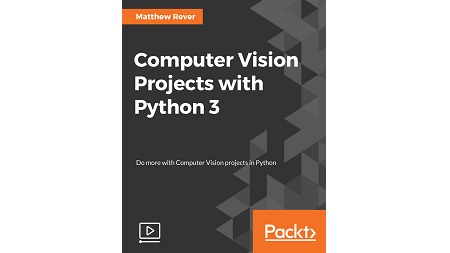
English | MP4 | AVC 1920×1080 | AAC 48KHz 2ch | 2h 19m | 509 MB
Explore Python’s powerful tools for extracting data from images and videos
The Python programming language is an ideal platform for rapidly prototyping and developing production-grade codes for image processing and computer vision with its robust syntax and wealth of powerful libraries.
This video course will start by showing you how to set up Anaconda Python for the major OSes with cutting-edge third-party libraries for computer vision. You’ll learn state-of-the-art techniques to classify images and find and identify humans within videos.
Next, you’ll understand how to set up Anaconda Python 3 for the major OSes (Windows, Mac, and Linux) and augment it with the powerful vision and machine learning tools OpenCV and TensorFlow, as well as Dlib. You’ll be taken through the handwritten digits classifier and then move on to detecting facial features and finally develop a general image classifier.
By the end of this course, you’ll know the basic tools of computer vision and be able to put it into practice.
This video tutorial offers a project-based approach to teach you the skills required to develop computer vision solutions in Python.
What You Will Learn
- Install and run the major computer vision packages within Python
- Apply powerful support vector machines for simple digit classification
- Understand deep learning with TensorFlow
- Work with human faces and perform identification and orientation estimation
- Build a deep-learning classifier for general images
Table of Contents
Introduction and Tool Setup
1 The Course Overview
2 Downloading and Installing Python 3 Anaconda
3 Installing Additional Libraries
4 Exploring the Jupyter Notebook
Handwritten Digit Recognition with scikit-learn and TensorFlow
5 Acquiring and Processing MNIST Digit Data
6 Creating and Training a Support Vector Machine
7 Applying the Support Vector Machine to New Data
8 Introducing TensorFlow with Digit Classification
9 Evaluating the Results
Facial Feature Tracking and Classification with dlib
10 Introducing dlib
11 What Are Facial Landmarks
12 Example One – Finding 68 Facial Landmarks in Images
13 Example Two – Faces in Videos
14 Example Three – Facial Recognition
Deep Learning Image Classification with TensorFlow#
15 A Deeper Introduction to TensorFlow
16 Using a Pre-Trained Model (Inception) for Image Classification
17 Retraining with Our Own Images
18 Speeding Up Computations with GPUs
Resolve the captcha to access the links!